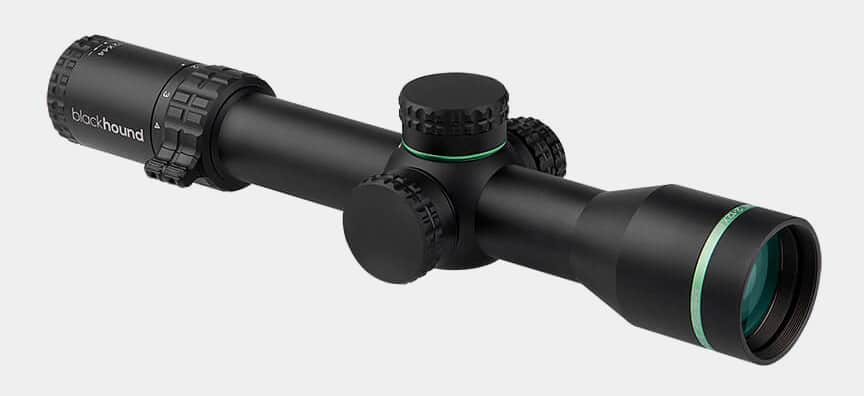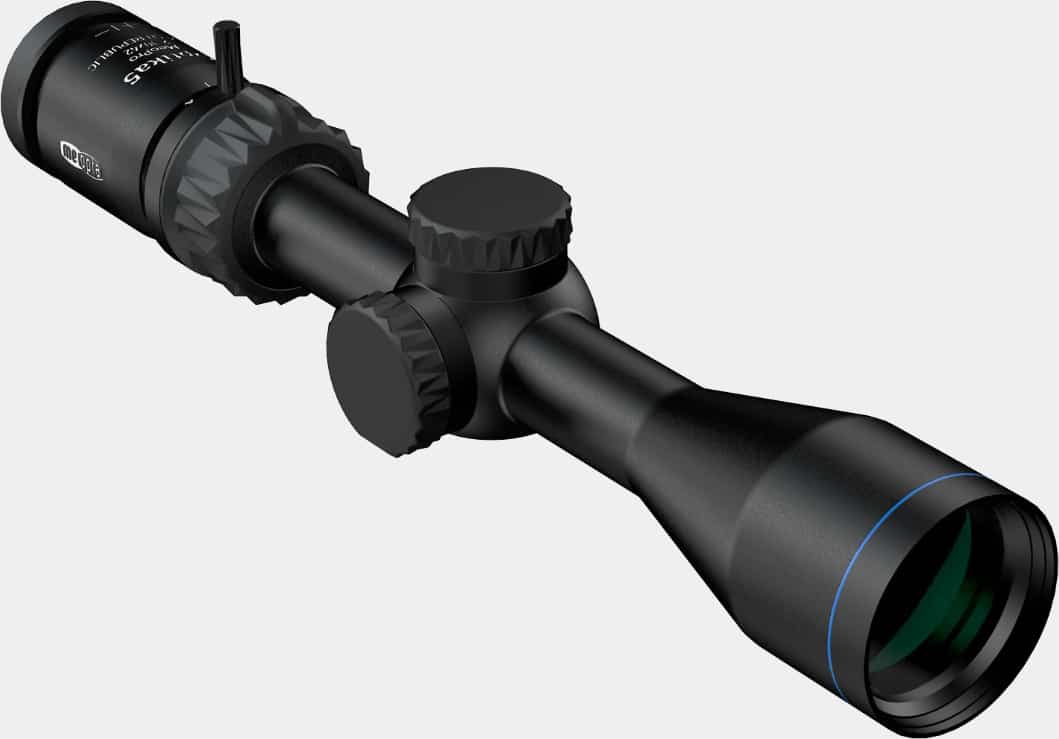Range Test: Federal 6.5 Creedmoor and .308 Premium Gold Medal
December 25th, 2023
8 minute read
Waiting in hunting camp for the day to age and its cold wind to diminish, I grew restless. So, to do something productive before pestering deer, I pasted a target on a box and trotted it out 100 yards. Then I scrounged a few cartridges my pal had left for his new rifle, languishing near my cot. Alas, no matter how tightly I pressed it into the bunched jacket on the picnic table, it shuddered to the buffeting from the north. Firing seemed futile.
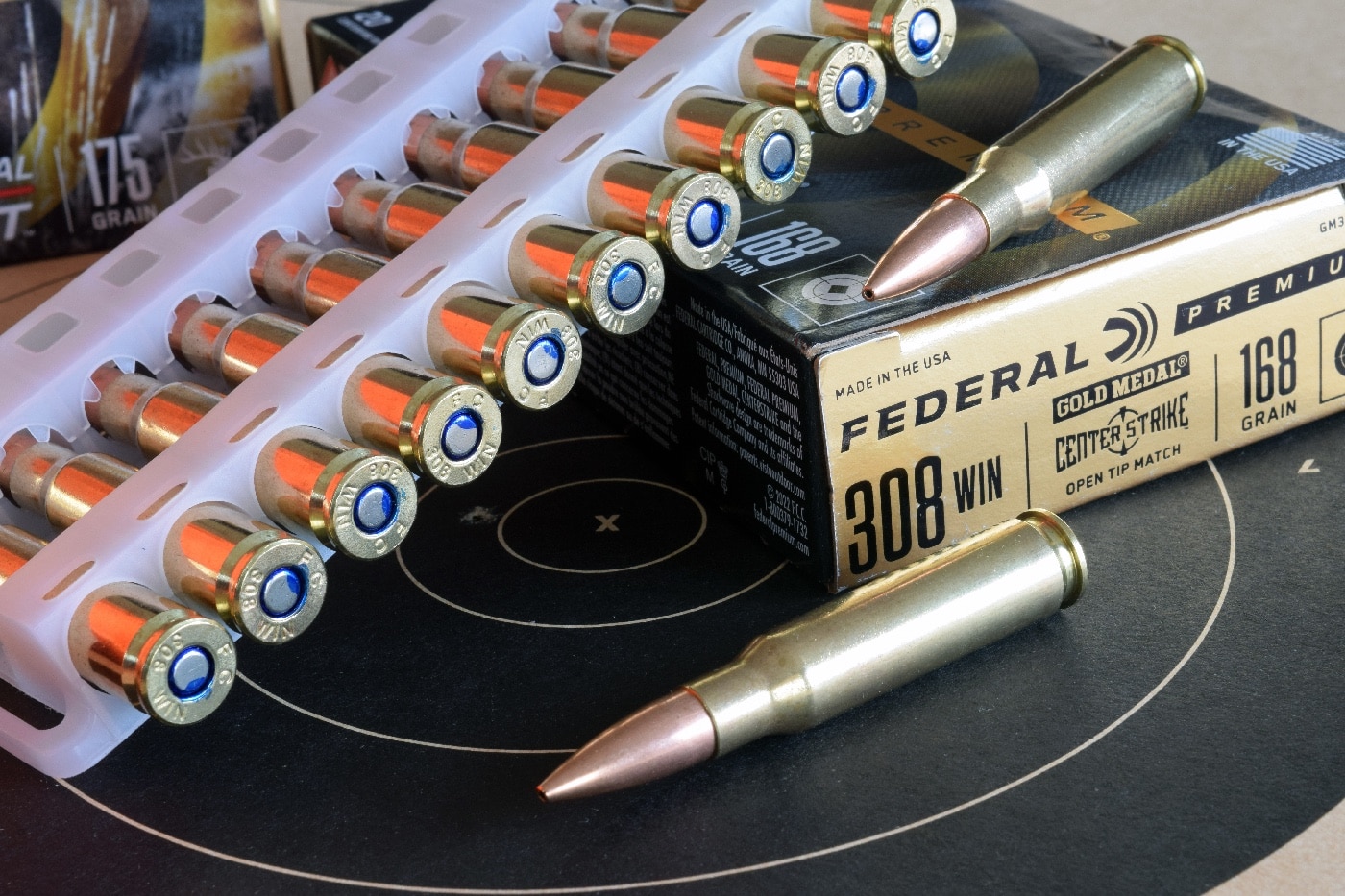
To my astonishment, three bullets chewed a hole .37 wide.
In my youth, tennis-ball groups passed muster for the woods.
“Good grief!” I marveled. “The muzzle was bouncing that much!” How would this rifle perform in still air? But speculation is pointless. Accuracy — consistency — begs measure. For shooters, it’s center-to-center span between outside holes in a group. Where the group forms matters not, because the sight can always be adjusted to bring it to point of aim.
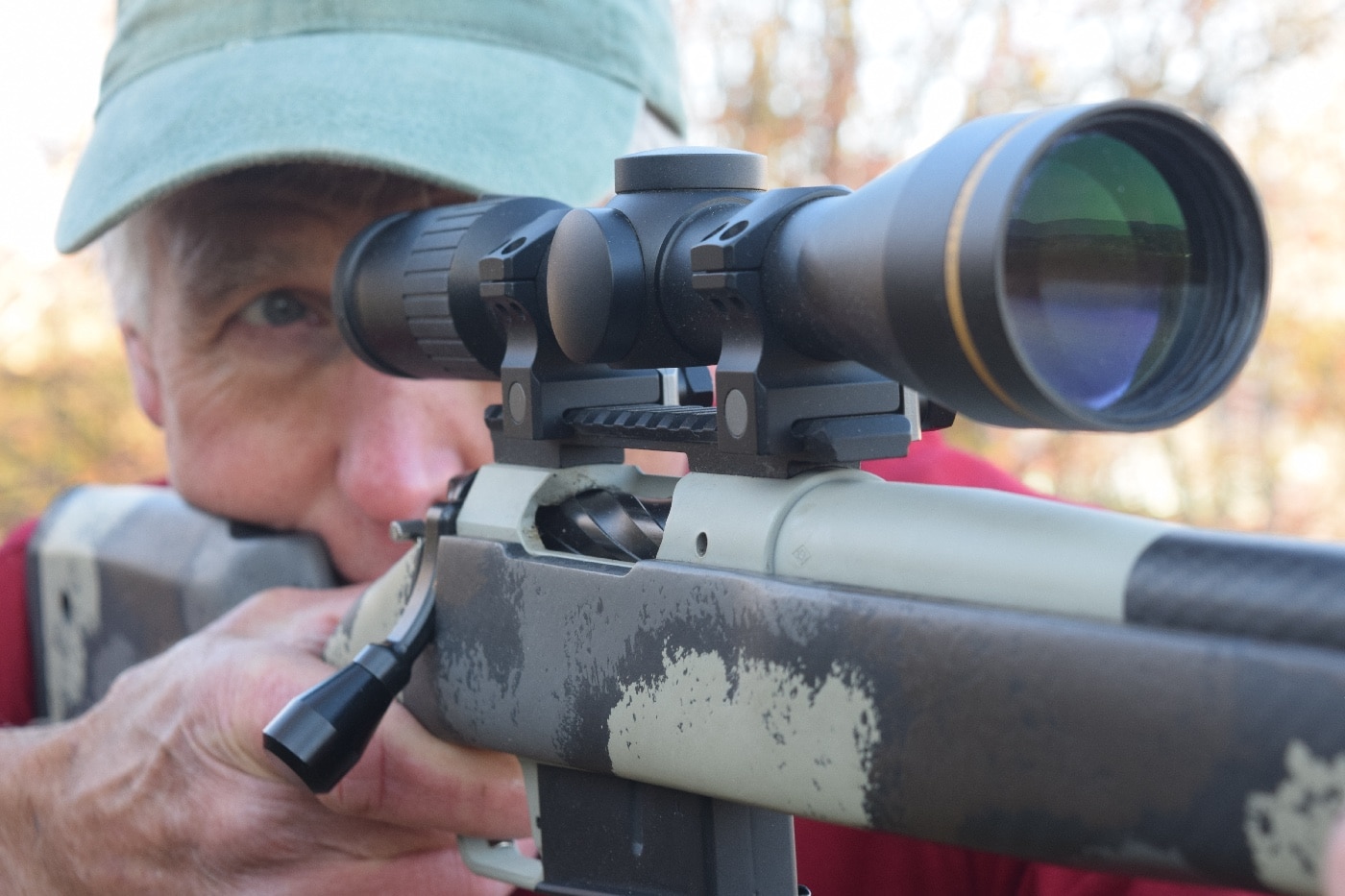
Groups comprising just three shots draw sneers from Benchrest and bulls-eye competitors, who in matches must fire five or 10 per target. The test target of my first match rifle had one aspirin-size hole. It had been nipped by 10 .22 bullets fired from 50 feet indoors, where such rifles earned their keep. In prone matches outdoors, the rifle shot as well, but wind, mirage and the natural dispersion of bullets at distances to 100 yards opened the groups. Of course, indoors and out, my own failings sent many bullets off course!
The ability of rifle and load to drill small groups figures into their “field accuracy” about as much as the price of eggs affects the cost of living. Group-shrinking measures like tight chambers, short throats, lapped bores and glass bedding can’t over-ride the bump of your pulse, let alone flawed range and wind estimates and a violent tug on the trigger. Neither will an exotic scope or “match ammunition” salvage a shot made without deliberate aim.
Decades ago in Zimbabwe, tip-toeing after an impala that had melted into thick thorn, I paused to listen. At that instant, the bush rustled to a gust of desert wind — a burst that hurled my scent as shrapnel. The ram got a noseful; but the directionless blast denied him the source. He panicked and, as luck would have it, bolted my way, emerging as a blur from the shadows. He saw me in mid-leap and sun-fished two feet from the muzzle. The bullet, fired reflexively without conscious aim, broke his neck.
A lucky shot or a good shot, depending on how charitably you view it.
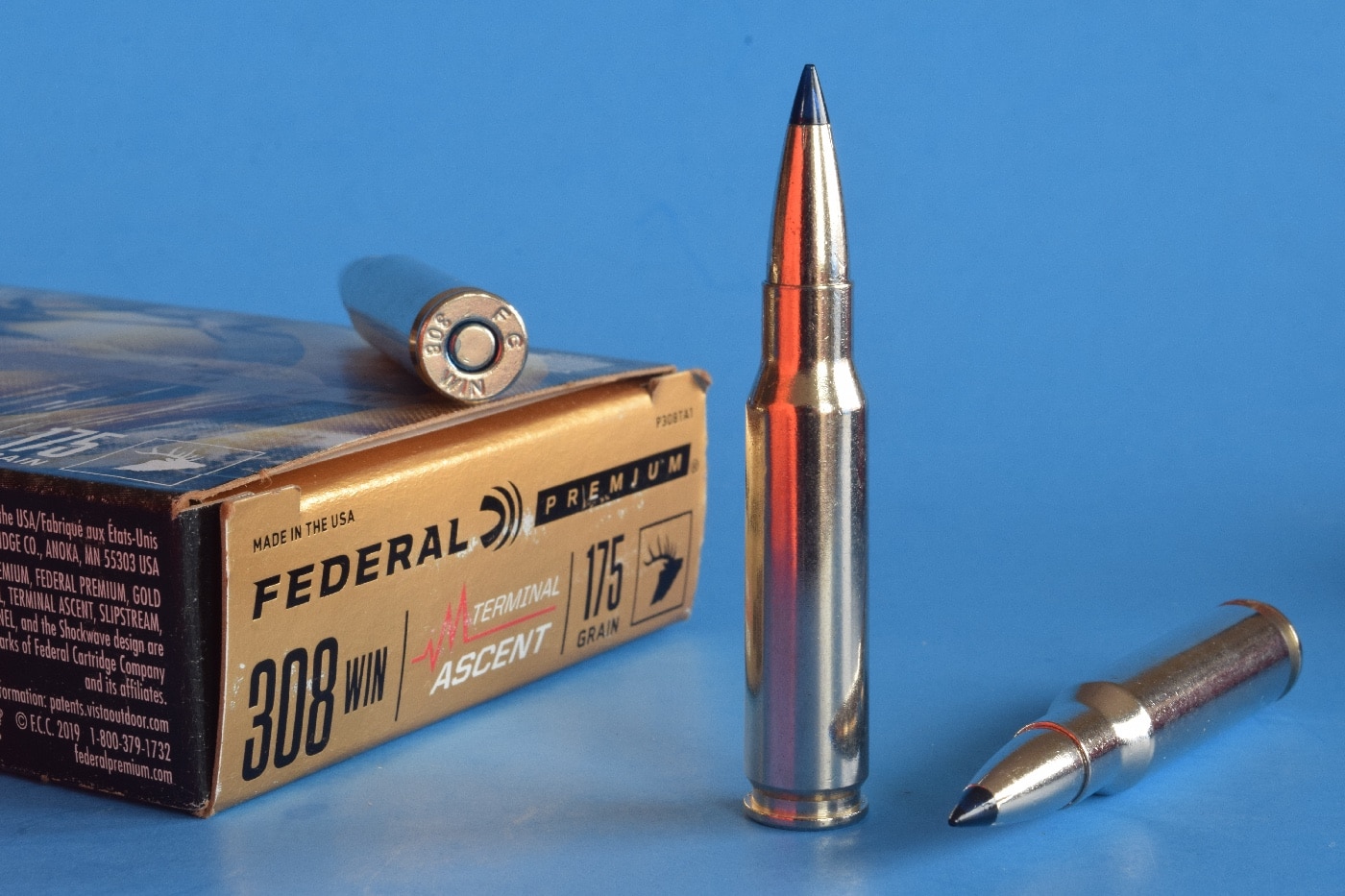
Some Perspective
In traditional hunting, field shooting is a test of marksmanship, not of the rifle’s or load’s intrinsic accuracy. Distance is often unknown, wind downrange undecipherable. The hunter has no bench and only occasionally a solid rest. As few shots at game are duplicates of previous shots, repetition isn’t a practical gauge of field accuracy. To shoot accurately is to hit vitals with every — or nearly every — bullet. Assumed is the good judgment to decline risky shots.
The line between hunting and target rifles blurs as long-range shooting gains traction among the proletariat. “If I can hit plates at 600 yards, why not deer?” Beyond opinions drawn out by this question, it has led to development of rifles light enough for hunting but in chamberings and with features useful in long-range matches, like Springfield Armory’s Model 2020 Waypoint. Since its introduction four years ago, I’ve used this bolt rifle to shoot targets, hunt deer and, most recently test ammunition.
The Waypoint’s U.S.-built action has a Model 700 footprint to accept M700-pattern stocks and triggers. Not that you’ll want to replace Springfield’s. The pillar-bedded carbon-fiber (CF) stock from AG Composites comes with a Pachmayr Decelerator pad, a fixed or adjustable comb. The steep, full grip has a palm swell, the substantial 12 ¾-inch forend three M-Lok slots and five QD swivel pockets. Evergreen and Ridgeline camouflage stock finishes comprise open patchworks of natural colors with dark flecking. Inletting is properly close around receiver and bottom metal. The barrel floats.
The Waypoint’s stainless receiver, Cerakoted to match the barrel shank and muzzle brake, has a spiral-fluted, two-lug 4140 bolt that glides in EDM-cut races. Like the receiver, the bolt is machined after heat-treating to ensure perfect finished dimensions. Dual cocking cams ease bolt lift. Unlike M700 recoil lugs, the Waypoint’s is integral with the receiver. Four 6-48 screws and two recoil pins secure a Picatinny top rail. The TriggerTech trigger adjusts down to 2 ½ pounds. The rifle’s 1.9-millisecond lock time is “up to 45 percent faster” than the competition’s. The two-position safety does not block the bolt. Shoulders on the extractor, 6mm wide, hold it securely in the bottom lug and resist breakage, should you stick a case.
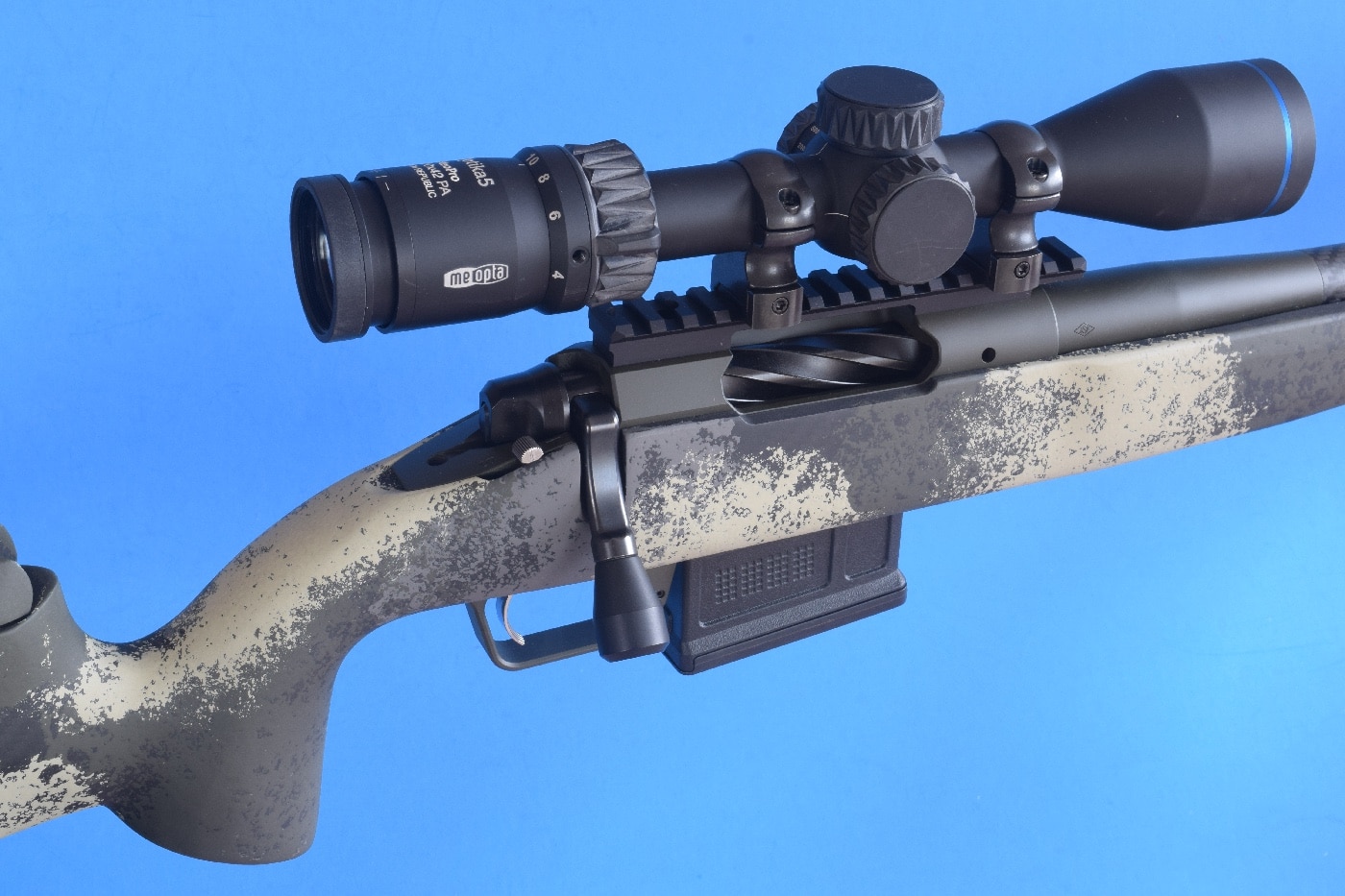
Springfield Armory fitted the Waypoint with a single-stack AICS-pattern magazine, released by a latch inside the trigger guard. Button-rifled barrels — fluted stainless or CF — are chambered in 6mm Cm, 6.5 Cm, 6.5 PRC and .308. Twist rates favor the long, sleek bullets now popular with hunters and long-range target shooters: one turn in 7 ½ inches for the 6mm Creedmoor, one in 8 for the 6.5s, one in 10 for the .308. All barrels are threaded 5/8-24 for the included radial brake.
With match ammunition, each Waypoint is guaranteed to shoot into .75 MOA. To test that boast, I was sent one of the first of these Springfields. It wore a standard stock, a 24-inch CF barrel in 6.5 PRC (6mm Cm and .308 barrels are 20 inches long, those in 6.5 Cm 22 inches). A 2.5-10×45 Leupold brought weight to an even 8 pounds. Naked, Waypoints range in weight from 6 ½ pounds to just over 7 ½.
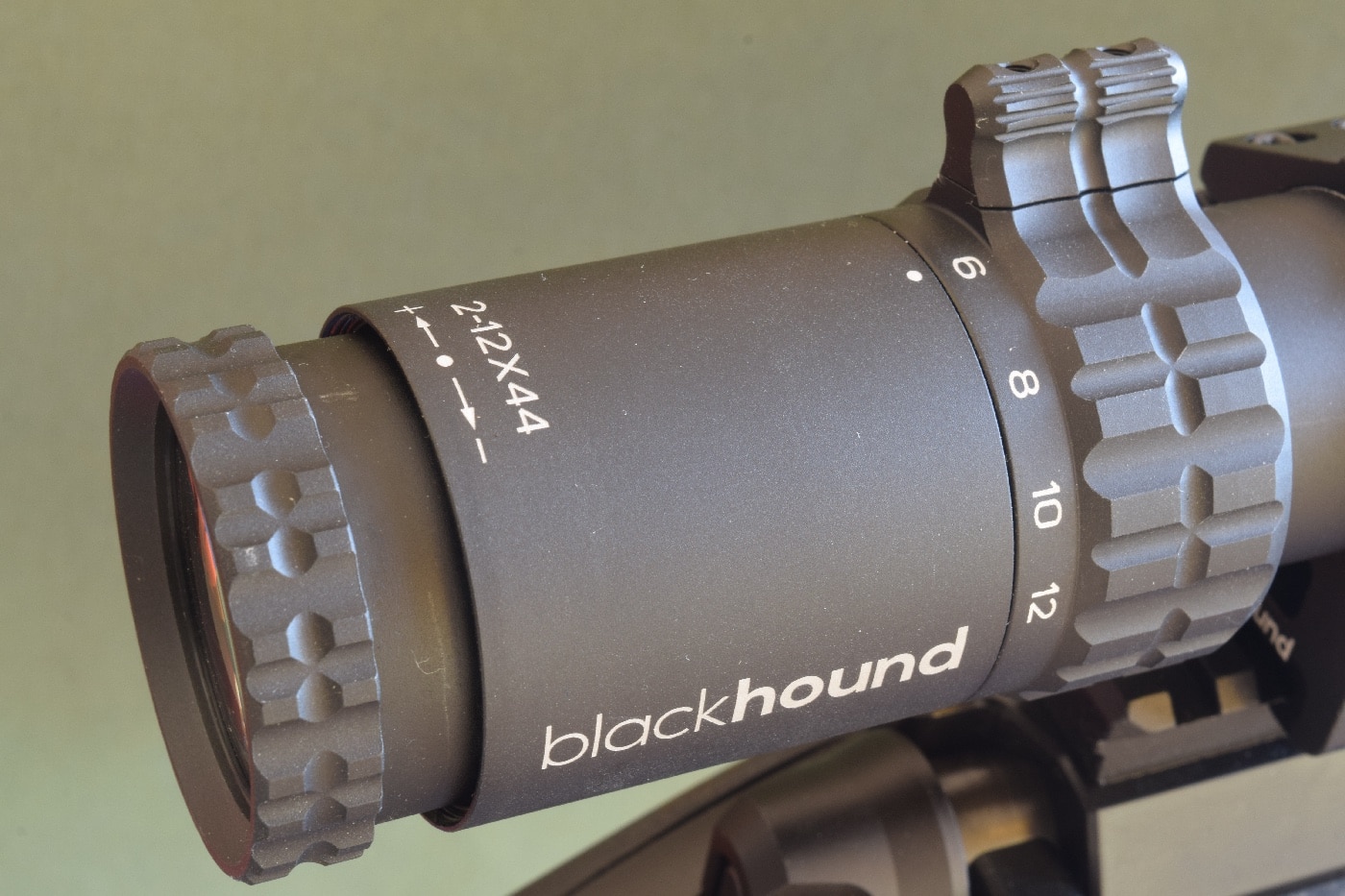
My first three shots, after bore-sighting and two to zero, cut a .62 knot. Three more groups mic’d .63, .70 and .82. Average: .69 — even with the shot I’d horsed half an inch from a one-hole pair. Feeding, extraction and ejection were fault-free. Springfield’s barrel-diameter brake held recoil to a modest bump.
Reaching Out
So it came to pass that when I was asked to review Federal’s new 6.5 Cm and .308 Premium Gold Medal match loads, Waypoint 2020 rifles came to mind. For ammunition tests, accurate rifles are a must. You can’t pass judgment on one variable when working with two.
Rifles in hand, I cinched a 2-12×44 Blackhound scope on the 6.5Cm, a 2-10×42 Meopta MeoPro Optika 5 on the .308.
While Federal’s Gold Medal ammunition has long served the 6.5 Cm and .308, Centerstrike OTM (open-tip match) bullets are new. Federal stokes them to the velocities it gives Sierra MatchKing BTHPs (boat-tail hollow-points) from these rounds. Here are the numbers:
Federal Premium Gold Medal 6.5 Creedmoor, 140-grain Centerstrike OTM
| Range (yards) | 0 | 100 | 200 | 300 | 400 | 500 |
| Velocity (fps) | 2,675 | 2,515 | 2,360 | 2,211 | 2,068 | 1,929 |
| Energy (ft-lbs) | 2,224 | 1,966 | 1,732 | 1,520 | 1,329 | 1,157 |
| Arc (inches) | +2 | 0 | -8.3 | -23.7 | -47.0 | |
| Drift in 10 mph crosswind (inches) | .6 | 2.5 | 5.9 | 10.9 | 17.4 |
Federal Premium Gold Medal .308 Winchester, 168-grain Centerstrike OTM
| Range (yards) | 0 | 100 | 200 | 300 | 400 | 500 |
| Velocity (fps) | 2,650 | 2,455 | 2,268 | 2,089 | 1,918 | 1,758 |
| Energy (ft-lbs) | 2,619 | 2,248 | 1,918 | 1,628 | 1,373 | 1,152 |
| Arc (inches) | +2.1 | 0 | -9.0 | -25.7 | -52.1 | |
| Drift in 10 mph crosswind (inches) | .7 | 3.2 | 7.6 | 13.8 | 22.8 |
Federal Premium Gold Medal .308 Winchester, 175-grain Centerstrike OTM
| Range (yards) | 0 | 100 | 200 | 300 | 400 | 500 |
| Velocity (fps) | 2,600 | 2,427 | 2,262 | 2,102 | 1,949 | 1,803 |
| Energy (ft-lbs) | 2,627 | 2,290 | 1,987 | 1,717 | 1,476 | 1,264 |
| Arc (inches) | +2.2 | 0 | -9.1 | -25.8 | -51.8 | |
| Drift in 10 mph crosswind (inches) | .6 | 2.9 | 6.9 | 12.5 | 20.3 |
My initial groups were very much like those of test targets provided with the rifles. Three-shot groups at 100 yards came in well under an inch. Groups in the first session: .78 for the 140-grain 6.5 Cm load, .45 for the 168-grain .308 load and .85 for the 175-grain .308 load. I look forward to shooting it more and seeing if I can get those groups even tighter.
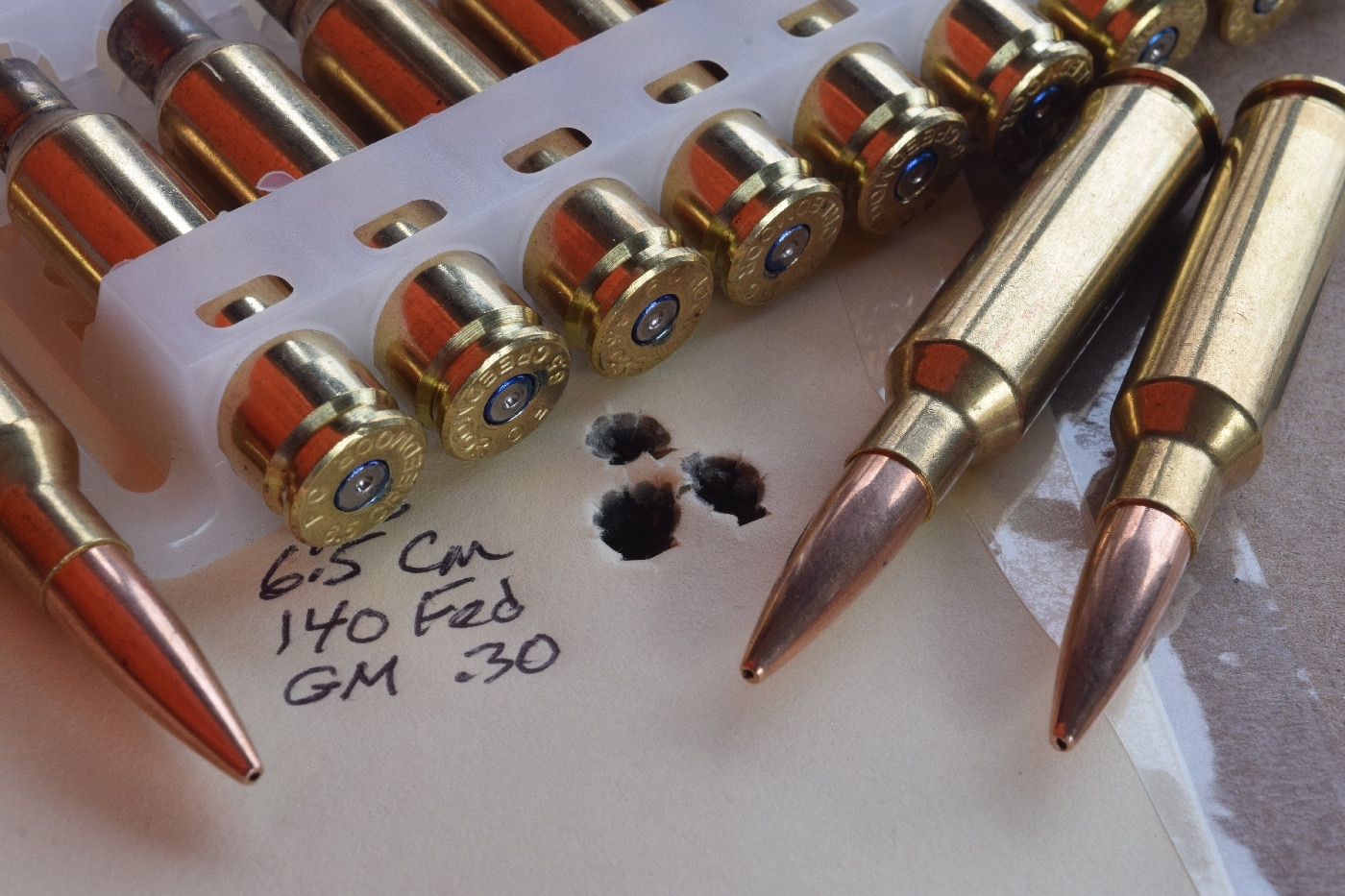
Now, in response to howls from shooters who insist on five-shot groups, or series of them: you’re right. The greater the sample size, the more robust the results. But before getting barrels warm, I wanted to see how they, and the cartridges, performed in “hunter protocol.” Few hunters pound through boxes of costly ammo in five-shot strings for more solid data. Each additional shot carries the risk it will hit farther off the mark than the last. Shooting carefully to snug groups is also time-consuming. Lastly, accuracy can deteriorate during range sessions. Some barrels “walk” as they heat; barrels foul. You may have to let the rifle cool periodically, or scrub the bore — unpopular concessions at the range.
Three shots can reveal the potential of rifles and loads. The .37 group that cold day in deer camp may have been a one-off. But it certainly inspired me! At the same time, a couple of dispiriting three-shot groups can warn you off a load before you max out your credit card at Midway USA or a Cabela’s ammo counter. Even mid-level rifles are now commonly packaged with three-shot proof targets.
Conclusion
I’m pleased with the performance of all three new Federal loads, and with my pick of Springfield Waypoint 2020s to test them. My only contribution to the rifles was adjusting the triggers from 3½ and 4 pounds to an even 3.

Incidentally, for load tests with rifles that haven’t yet earned my confidence, I like to bring to the range one that has. A few shots with a “back-up” have spared me pointless banging with a rifle that just didn’t shoot well. A second rifle can also ensure I’m not the problem. Once, with no other rifle to fire the ammunition on the docket, I brought along a trusted sporter of different chambering, with a handful of cartridges. Plagued by saucepan groups with the new rifle, I turned to my beloved .257. It punched a .65-inch delta with the first three shots. Promptly I boxed up the new rifle for its return.
Arguably, range trials after rifles and ammo have cleared the hurdles to commercial production have limited merit. Springfield’s Waypoint, and Federal’s Gold Medal Match have been so thoroughly vetted that post-release shooting shouldn’t yield surprises. Still, confirmation inspires confidence, which leads to better marksmanship.
Editor’s Note: Please be sure to check out The Armory Life Forum, where you can comment about our daily articles, as well as just talk guns and gear. Click the “Go To Forum Thread” link below to jump in and discuss this article and much more!
Join the Discussion
Featured in this article
Continue Reading
Did you enjoy this article?

 51
51








